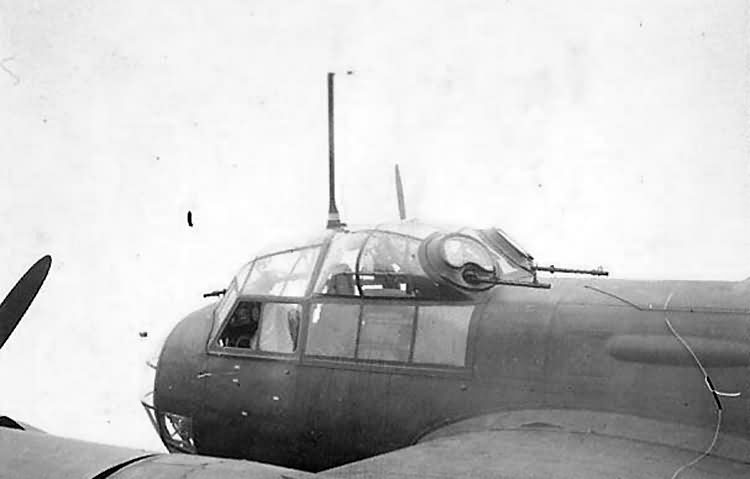The Ju 88’s defensive armament was designed to provide comprehensive protection against enemy fighters, with machine guns strategically positioned to cover various angles of attack. Here’s a detailed breakdown of the factory-installed and potential operational modifications:
Factory-Installed Defensive Armament
A-Stand (Windscreen Position):
- Weapon: One MG 81 (7.92 mm) machine gun.
- Mounting: Installed in a Lafetie Lg 81VE45B mount.
- Operator: Controlled by the bombardier, who had the dual role of operating this forward-firing machine gun.
- Ammunition Supply: 750 rounds.
- Purpose: This gun provided frontal defense, primarily to deter head-on attacks by enemy fighters.
B-Stand (Rear of Cockpit):
- Weapons: Two MG 81 machine guns, one on each side.
- Mounting: Each gun was mounted in a Linsenlafette Z10D (LL-K 81VE) barbette.
- Operator: Controlled by the radio operator, who also doubled as the upper gunner.
- Ammunition Supply: 1,000 rounds per gun.
- Purpose: These guns covered the sides and rear of the aircraft, defending against attacks from behind and above.
C-Stand (Rear of Cupola):
- Weapons: One twin-mounted MG 81 setup.
- Mounting: Installed in an armored Bola 39 barbette, later upgraded to Bola 81Z from late 1941 onwards.
- Operator: Controlled by the lower gunner, who had a critical role in defending the aircraft’s vulnerable underside.
- Ammunition Supply: 2,000 rounds.
- Purpose: This position provided defense against attacks from below, especially during low-altitude operations or when flying over enemy positions.
Operational Modifications
In combat situations, Ju 88 crews frequently modified their aircraft to enhance its defensive capabilities based on operational experience and specific mission requirements. These modifications were often done in the field:
Additional Machine Guns:
- Crews commonly added extra MG 81s in the side windows of the canopy to increase lateral defense. This was especially useful in dense air combat situations where threats could come from multiple directions.
- Sometimes, a machine gun was added to the upper part of the glazed nose, giving the bombardier another forward-facing weapon to engage enemy aircraft.
Upgrading Armament:
- The MG 81s were often replaced by the heavier MG 131 (13 mm) machine guns. This upgrade provided more firepower and a longer effective range, crucial for deterring more heavily armored or fast-moving enemy fighters.
- In some cases, crews even installed 20 mm cannon in the lower part of the cockpit, aimed for ground attack missions or to deliver a more powerful defense against low-flying aircraft.
Ground Attack Modifications:
- For missions involving strafing or attacking ground targets, the Ju 88 was occasionally fitted with heavier armament in the lower cockpit area. This setup allowed the aircraft to serve a dual role as both a bomber and a ground-attack aircraft.
